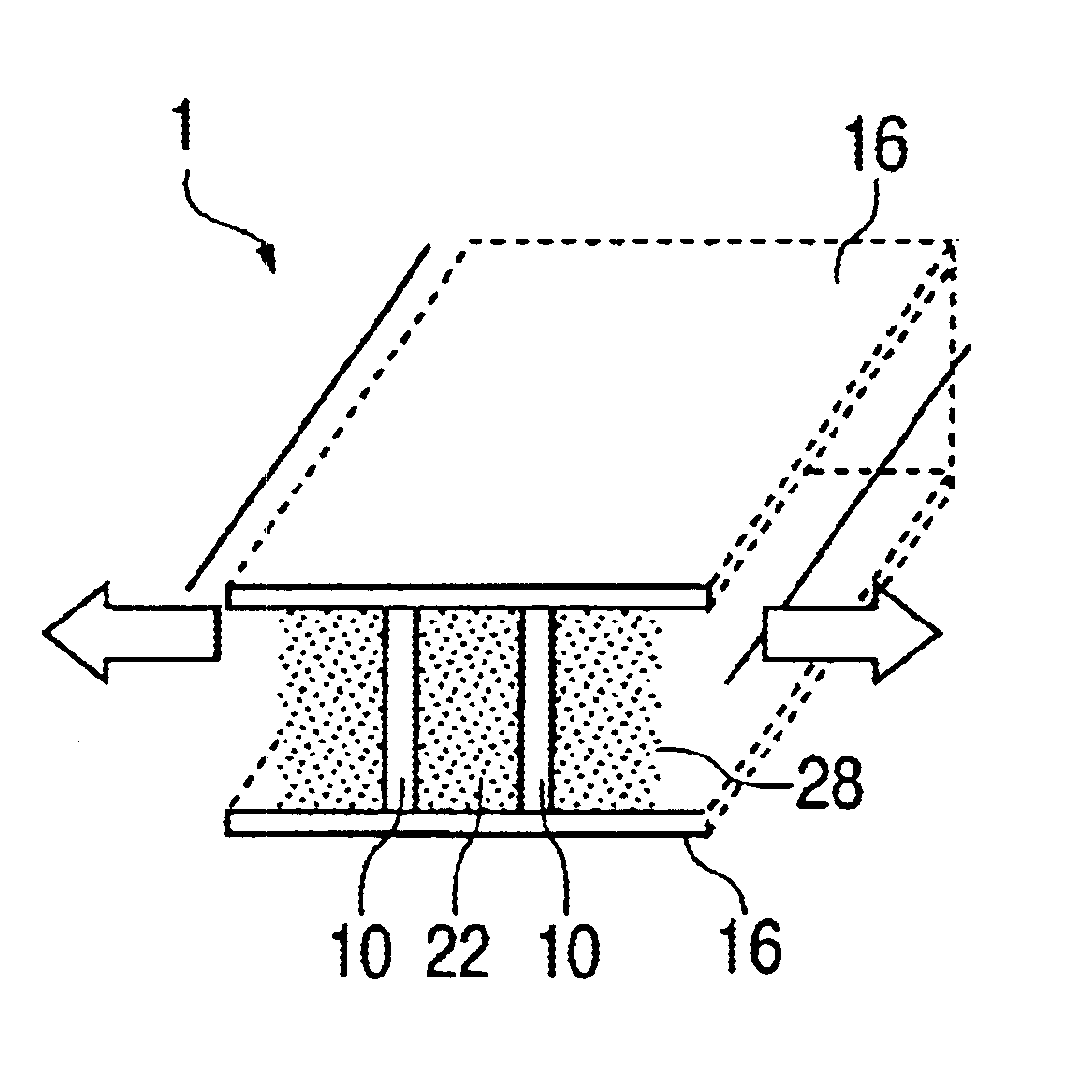Dual-flow common combustor chemical laser
a chemical laser and combustor technology, applied in the field of chemical lasers, can solve the problems of limited mass efficiency of available chemical lasers, linear and cylindrical lasers, and varying medium quality, and achieve the effects of reducing energy consumption, improving mass efficiency, and improving mass efficiency
- Summary
- Abstract
- Description
- Claims
- Application Information
AI Technical Summary
Benefits of technology
Problems solved by technology
Method used
Image
Examples
Embodiment Construction
According to an embodiment of the present invention, a chemical combustion laser is provided having a modular, aluminum design that produces two linear, supersonic gain regions from a single combustion chamber as shown in FIG. 3. This structure results in a minimum surface area combustion chamber and a balanced thermal design. The laser module is referred to herein as a boxer laser module 1. FIG. 3 is an end view of the boxer laser module that includes a combustion chamber 22 and on the left and the right sides, gain regions 28. Gain is produced in the gain regions 28 by the out-flow of combustion products such as, deuterium fluoride, nitrogen, atomic fluorine, and heated helium and by the helium and hydrogen gases injected into the cavity which produce a chemical reaction.
As shown in FIGS. 4 and 5, each boxer laser module consists of two nozzle blade structures 10 with combustor injectors 12, cavity injectors 14, combustor sidewalls 16 and cavity shrouds 18 with integral cavity iso...
PUM
 Login to View More
Login to View More Abstract
Description
Claims
Application Information
 Login to View More
Login to View More - R&D
- Intellectual Property
- Life Sciences
- Materials
- Tech Scout
- Unparalleled Data Quality
- Higher Quality Content
- 60% Fewer Hallucinations
Browse by: Latest US Patents, China's latest patents, Technical Efficacy Thesaurus, Application Domain, Technology Topic, Popular Technical Reports.
© 2025 PatSnap. All rights reserved.Legal|Privacy policy|Modern Slavery Act Transparency Statement|Sitemap|About US| Contact US: help@patsnap.com



